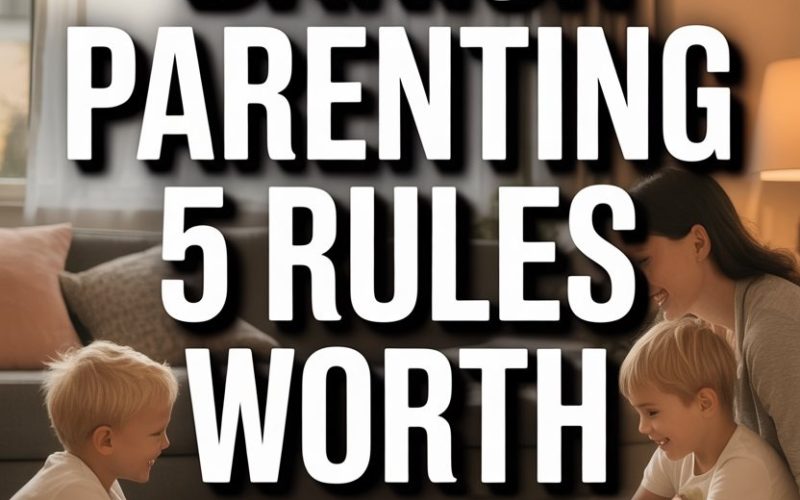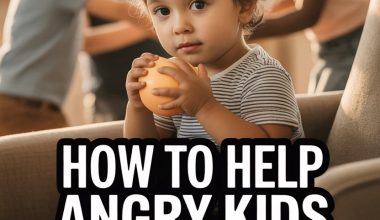Ever caught yourself staring, slack-jawed, at a Danish playground on Instagram?
Kids in mismatched socks, faces muddy, everyone grinning—even the parents, whose main accessory seems to be a thermos of strong coffee and a sense of calm.
Danish parenting consistently lands Denmark at the top of those happiness rankings. No, it’s not just because of pastries and bike lanes.
There’s a method to this Scandi magic that works even for parents who have only five minutes to read an article between work calls and fish-finger negotiations. Here are five rules worth pinching from the Danes, no passport required.
1. Hygge Is a Parenting Tool, Not Just a Trendy Candle
Hygge (pronounced “hoo-guh”) is more than fuzzy socks and Instagrammable mugs. In Denmark, it’s a verb, a noun, an adjective, and—if you ask any parent—a life raft for family sanity.
At its core, hygge means creating cosy, calm moments together. Research highlights how shared rituals (think Friday night pancakes or Sunday sofa time) help children feel secure and connected.
Simple practices can be surprisingly powerful. Light a candle at dinner, pile everyone under one blanket for storytime, or just eat biscuits with tea and call it an “event.”
The magic isn’t in the props; it’s in the togetherness. Try banning phones (yep, you too) for half an hour and watch as conversation appears—awkward at first, but then as warming as a radiator in February.
2. No Such Thing as Bad Weather, Only Bad Clothing
Danes treat rain as a mild inconvenience at worst, a character-building opportunity at best. Children are bundled up and sent outdoors, drizzle or shine.
The idea isn’t to toughen them up for a Viking raid; outdoor play is a pillar of Danish child development.
A study from Aarhus University found that regular outdoor time improves children’s concentration, creativity, and even physical health. The Danes swear by the saying, “There’s no such thing as bad weather, only bad clothing.”
Slip your kids into a waterproof suit, hand them a bucket, and let them muck about. Mud in the hair? You’re doing it right.
The bonus: kids return indoors suspiciously tired and suspiciously happy. You might even get a hot cup of tea in peace.
3. Less Helicopter, More Free-Range
Hovering, micromanaging, and scheduling every spare moment? Not very Danish. Instead, there’s a subtle trust that children are capable, even from a surprisingly young age.
Danish playgrounds are famously “unsafe” by some standards—rope bridges, actual tools in the sandbox, and a healthy absence of rubberized everything.
Psychologist Jessica Joelle Alexander, co-author of The Danish Way of Parenting, explains that giving children age-appropriate freedom builds resilience and self-worth.
That doesn’t mean unleashing toddlers at the roundabout, but allowing kids to walk to school with a buddy or climb that slightly wobbly tree sends a clear message: “I trust you.”
Try swapping one after-school class for a stretch of unsupervised play. No enrichment agenda, just a patch of grass and the opportunity to get gloriously bored.
Some of the best problem-solving skills spring from boredom—yes, really. (And if the only consequence is a muddy pair of jeans, you’re on the right path.)
4. Honesty Is the Best Policy, Even About Hard Stuff
Danish parents don’t sugarcoat. When tough topics come up—grief, loss, divorce, the dog running away—they answer honestly, in language their children can grasp.
The result: kids learn that difficult emotions are part of life, not something to fear or hide.
One Danish study from the University of Copenhagen found that children whose families embraced open, truthful conversations displayed greater emotional resilience.
And no, this doesn’t mean a soul-baring monologue every night before bed. It’s more about not dodging the “why did Grandma die?” questions or pretending your own bad mood is “just a tummy ache.”
Honest conversations might feel awkward, but they’re a gift. Sit together, ask questions, and admit when you don’t have all the answers. Children are perceptive; they’ll appreciate the candour even if they don’t say so (yet).
5. Play Is Serious Business
Danes treat play as a developmental superfood, not just what kids do when the grownups need to empty the dishwasher. Free play—unstructured, imaginative, sometimes wild—is prioritised both at home and in schools.
Danish preschools famously dedicate most of the day to play, not early academics.
Research from Roskilde University shows that children who engage in regular, unstructured play display greater creativity, social skills, and emotional stability.
The catch? Adults have to stand back and let it happen.
If the thought of glitter glue in the sofa fills you with dread, start small. Pull out some building blocks or a box of random costumes and see what unfolds.
Resist the urge to “play referee” unless safety is at stake. Sometimes the best role is chief tea-maker, sitting nearby and only intervening to marvel at the six-headed dragon your child has created out of sofa cushions.
Stealing Like a Dane (No Longboat Required)
Danish parenting isn’t about perfection, nor does it require a Nordic heritage or a sudden fondness for pickled fish. It’s a set of habits—simple, flexible, and oddly comforting—that make life less frantic and kids a little happier.
Next time the day feels out of control, try borrowing a Danish trick or two. There’s something oddly reassuring about knowing that a candle, a muddy puddle, or a moment of honesty can be all it takes.
And if all else fails, there’s always the pastry.





